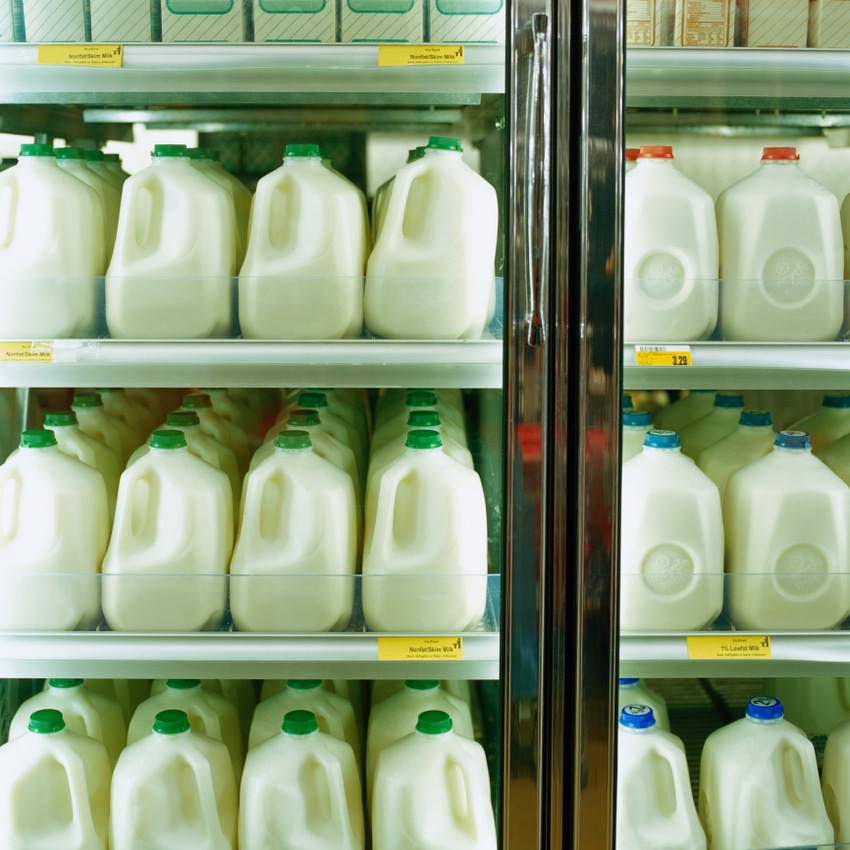Sector begins analyzing how to keep retail sales momentum post-pandemic.

U.S. dairy industry leaders said the sector continues to focus on the immediate needs of domestic consumers and producers due to the COVID-19 pandemic, but the discombobulation of the supply chain and resulting demand and consumer behavior changes will need to be analyzed before the industry is able to fully understand how to plot a path forward.
Tom Gallagher, chief executive officer of Dairy Management Inc. (DMI), said during a conference call this week that a lot of money and efforts have been diverted to key issues like getting food into the hands of consumers and continuing to earn trust. Additionally, he said funding continues to be directed to research on the value of fat.
At the lowest point, the number of transactions at quick-service restaurants was down 42%; right now, transactions are down about 20%. Full-service restaurant transactions were down 80% at the worst point and are still down 60%.
At the height of the pandemic in the U.S., Gallagher said 70% of consumers said they were going to avoid eating anything from out of the home. That number is now at 50%. “That number will reduce over time, ideally,” he said.
On the retail side, Gallagher reported that milk sales prior to the pandemic were down 5%. They went up about 34% during a two-week period during the pandemic, and now retail sales are up an average of 10%.
Gallagher pointed out that cereal sales historically have gone down about 1-3% annually, but during the pandemic, they were up 78%. Now, sales are at 17%.
“Why is that critical? Well, cereal historically was 3% of all fluid milk. People are obviously eating at home more,” he explained.
The increase has brought questions of how to optimize those sales post-pandemic, Gallagher relayed.
As such, the industry is now beginning efforts to analyze consumer motivation during the pandemic.
Another phenomenon during the pandemic was frozen pizza sales at the retail level, which Gallagher said “bumps along pretty flat, historically.” For a two-week period during the pandemic, however, pizza sales were up 120% and have since been up 39%. “That’s important to us, just as cereal is,” he said.
Looking ahead, Gallagher said questions surround what consumer behavior will be after this and whether people will continue to eat more at home.
If consumers return to their pre-COVID-19 behaviors, which Gallagher believes is doubtful, the industry is going to be up against the same sales opportunities and issues it has always had.
“The reality is going to be somewhere between those two extremes, and that’s what we’ve got to be conscious of,” he said. “We’re going to do things for the dairy farmer based on the reality and the data.”
Barb O’Brien, president of DMI, said observing the national and local dairy groups’ staff over the past four to six weeks as they navigated the crisis was “amazing.”
Some of these efforts included rallying to feed “millions” of school children as well as donating thousands of soft-sided and barrel coolers to keep milk cold at feeding sites across the country. Dairy groups across the U.S. also worked with Feeding America to help quantify the demand for milk in local food banks and pantries. Kroger’s processing plants, as well as numerous other co-ops with excess milk, were also connected with Feeding America to get dairy products to those in need.
On the retail level, O’Brien relayed that local dairy industry staff stepped in to restock shelves if store staffing was affected. Additionally, staff contacted major retailers across the nation to ensure that any signage that limited purchases was removed.
“I’m pleased to share that we’re on top of that, and it’s really a rare situation where there are any limitations,” she said.
With June, which is National Dairy Month, right around the corner, the industry also plans to disperse additional content to encourage dairy consumption during these challenging times.
Foodservice partners stepping up
O’Brien said many of the dairy industry’s foodservice partners have also stepped up to help keep dairy moving into the marketplace.
“As you know, based on our work with some of these partners for more than 10 years now, dairy farmers have deep relationships and advocates of some of the biggest and most influential foodservice restaurants,” she said.
These partners, she relayed, are bringing expert staff, their insights into consumer behavior, their technical capabilities and their financial resources to the table, “which extends what we can do at a scale that we couldn’t do alone to immediately drive incremental cheese volume, and this is an extra 2 oz. of cheese on pizza.”
O’Brien announced that the dairy industry has two new promotional programs with Papa John’s and Pizza Hut. The promotions will run until the end of August.
Work with Domino’s continues as well, as the company has now moved up the launch of a new program that offers car-side delivery, to be implemented in July. Taco Bell has also revamped it’s menu offering to better accommodate consumers during the pandemic.
Exports better than anticipated
U.S. Dairy Export Council president and CEO Tom Vilsack reported that despite COVID-19, the U.S. exported an additional 44,000 metric tons of product during the first three months of 2020 versus 2019. This added an additional $237 million in value in terms of purchases.
Further, he said exports during the first three months of 2020 were 109,000 mt greater than the first three months of 2016, when the industry launched "The Next 5%" initiative. Value during the first three months of this year increased $528 million compared to the same period in 2016 -- all during the COVID-19 pandemic.
“Our Next 5% plan continues, notwithstanding the fact that we’re dealing with, obviously, much-changed landscape. We promised more people, more partnerships and more promotions, and we’re delivering on that,” Vilsack said.
U.S. dairy products are “very competitively” priced in the world market, particularly cheese, he noted.
“As we begin to see a recovery here in the U.S., we’ll keep an eye, obviously, on our competitiveness in terms of pricing, but right now it looks pretty good,” Vilsack said.
He noted that a decline in export is expected in the late-spring and early-summer months, but the group is “looking forward to a significant rebound in the latter part of the year.”
So far, numbers look better than anticipated, he added.
About the Author(s)
You May Also Like





